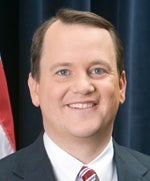People often take great pride in what they build. Today, I am filled with optimism because we’re tearing something down.
This week demolition begins at the old mall in downtown Worcester, an imposing edifice that has gone by many names, but never achieved the success its 1960s urban-renewal planners hoped for. Tearing down the mall to make way for CitySquare will right an historic wrong and have a profound positive effect on downtown Worcester and Central Massachusetts.
Poor Planning
By razing dozens of buildings and wiping whole city blocks off the map, the old mall cut out the heart of Downtown Worcester. Sprawling over 21 acres, with its concrete parking garage looking like a mini-Berlin Wall, the failing mall was so massive that it seemed hopeless to talk about change. Over time, it became too easy for people to ignore it, to throw up their hands and say there wasn’t much to be done. When I became mayor of Worcester, however, I couldn’t accept that argument. Too much was at stake for the city and this region.
So in August of 2003 I asked the community to believe that we could do better. I had come to understand that the mall’s decline was not a Worcester problem, but part of a national phenomenon of failed suburban-styled malls that were built in urban cores. (Boston’s Lafayette Place was another example of the failed urban mall concept.) There was no way to adjust the mall, or tweak the mix of stores inside to make it a success. We were dealing with a failure of architecture and planning. The only solution was to demolish and start anew.
Eight years have passed since I first called for the redevelopment of the mall, first as mayor, and then as lieutenant governor. I’ve kept focused on this project because of its transformative potential, not only for Worcester, but for the region.
And the fact that the promise of CitySquare has endured through depths of the worst economic crisis since the Great Depression is testimony to the fundamental importance of the project and the tireless hard work of many people in this community who were not willing to accept failure.
People often talk about the need for public-private partnerships in community development, and sometimes that just seems like a buzzword. Not in this case.
Evolving from what seemed like a radical idea of demolition to where we stand today took extraordinary work, courage and patience from many people in government and the private sector. Everyone who has believed in this project deserves credit for sticking with it.
What begins this week will reshape Worcester for generations to come. I believe we now have the right development team and community vision in place to make it a stunning success. CitySquare means new jobs at a time when our economy needs them most, both construction jobs and new permanent job opportunities at the businesses that will set up shop in the new district.
Its integration with the trains and buses at Union Station will make it a model of transit-oriented smart growth development.
The end of the long dark shadow the old mall has cast on downtown Worcester will bring new light and energy to the city. Over the next several years, a new neighborhood will rise, new streets will connect the downtown with the Canal District, Washington Square, Shrewsbury Street and the East Side, creating an exciting critical mass of urban life.
And because Worcester is the anchor of the economy in Central Massachusetts, a revitalized downtown will help the entire region continue to grow.
Timothy P. Murray is the lieutenant governor of Massachusetts.

